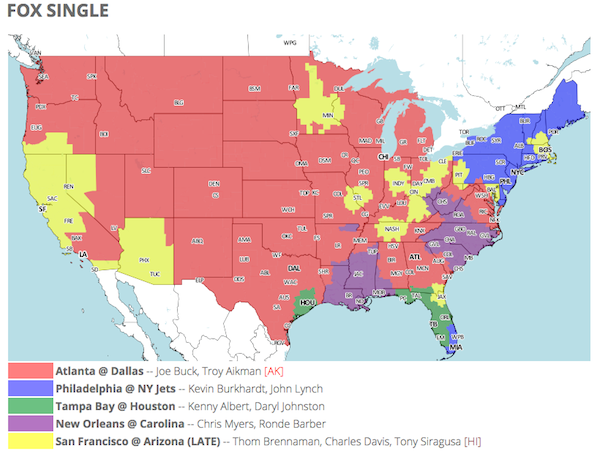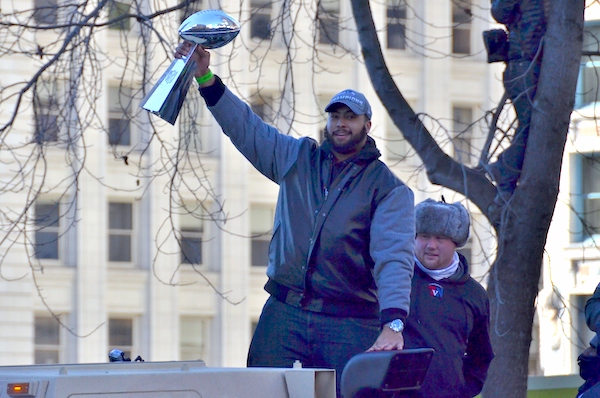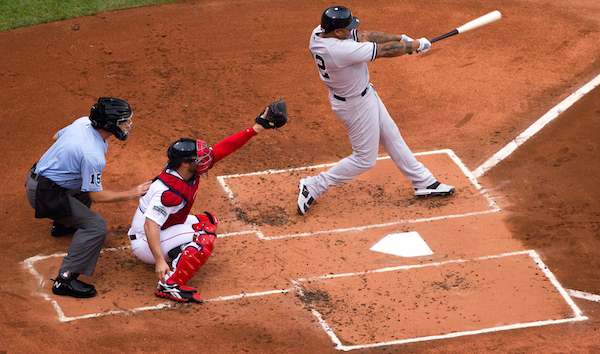Dear Sports Fan,
How can I tell what NFL football is on TV in my area? Each week there are a whole bunch of games on but I’m never quite sure what I’m going to be able to get at home on my television.
Thanks,
Tracy
Dear Tracy,
The NFL schedule is a tricky beast each week. If you’re a big football fan, like I am, you need to know what’s going to be on television so you can decide whether to stay home and watch, or if the best games aren’t on locally, to go to a bar where they pay to get all the games. If you’re a moderate fan of the NFL, probably the healthiest choice anyway, you need to know what your options are so you can decide what game to watch and know what channel it’s going to be on. If you’re not a fan at all, the information can still be useful if you live with a fan. Luckily, there is an amazing resource for NFL football TV schedules. It’s called 506 Sports! I am a complete and utter fanboy of their coverage of NFL television and probably go to their site four or five times a week during football season. If you become a convert, you can follow the site on Twitter or the site’s creator, JP Kirby.
During my Pitch that Game podcast last week, I tried to use 506 Sports’ NFL guide with my guest and we ended up talking for a while about exactly what each chart and map meant and how to best use them to figure out exactly what NFL football is on TV in your area each week. Here is a step by step guide.
The quick explanation for how to tell what NFL football is on TV in your area using 506 Sports
Go to the 506 Sports NFL table. Click on the correct number week to get to a set of maps. Look at your part of the country in each map. You will usually have three options, two on CBS and one on Fox or visa versa. The early game is at 1 p.m. ET. The late game is at 4:05 or 4:30 p.m. ET. To tell what time the game in the map labeled CBS Single or Fox single is, go back to the table.
How to use the 506 Sports NFL table
The first thing you’ll see when you go to 506 Sports’ NFL page is a giant table.

This table is divided into major horizontal rows that correspond to each week in the NFL season. The weeks are labeled primarily by their number, but there’s also a helpful date which helps you identify which week you want to focus on. The date is the Sunday of the week. To make things a little easier to follow, the table alternates light and medium gray at the week level. Find the current week. We’re in Week 3 right now, so that’s the one we’ll use for our example.
It’s unintuitive, but let’s start with the three columns on the far right of the table. Each one of these columns (with a few exceptions) will have one and only one game in it. That’s because each column corresponds to a day or time when the NFL usually only schedules a single game. The first of these three columns is for the Thursday night game, the middle for the Sunday night game, and the right most for the Monday night game. All of these games are televised nationally. ESPN owns Monday night, NBC, Sunday night, and Thursday is shared by several networks, so the network is included in the box. All of these games start around 8:30 p.m.
Now we’re ready (I hope) to tackle the two columns on the left. These columns are labeled with a network name, not a day of the week. Every game in both columns starts on Sunday afternoon, either at 1 p.m. ET or 4:05 or 4:30 p.m. ET. The 1 p.m. games are referred to as early games and the 4:05/4:30 games are called late games. The early and late time slots are shown as mini-rows within the weekly row. CBS and Fox divide these games between themselves in a complex, hotly negotiated way. Luckily, we don’t need to understand that. What we do need to know are a couple basic principles. The schedule is set up so that ideally, you should be able to see three games on Fox and CBS in your area each Sunday afternoon. The stations alternate weekends so that one weekend Fox will get to show games in both time slots while CBS shows games in only one and the next weekend will be the opposite. The second principle is that each team’s home games should be shown without competition in their area of the country. This second principle can sometimes override the first and limit the options from three to two.
Okay. Now we’re ready to see the maps and figure out exactly what is happening in your part of the country.
How to use the 506 Sports NFL maps
When you click on a week’s number on the 506 Sports NFL table, you get to a page with three maps. This is where the rubber hits the road. Each map corresponds to a channel and time slot. CBS or Fox, early or late. On a weekend when CBS has the double-header, like this one, there will be a CBS Early and a CBS Late map above a third Fox Single map. The schedulers have attempted to show everyone in the country two games on CBS at 1:00 p.m. ET AND 4:05 or 4:30 p.m. ET and one on Fox at either 1 p.m. ET OR 4:05 or 4:30 p.m. ET.
Within each map, the games in that time and channel are shown in a color-coded key below the map and the areas where they will be shown on TV are filled in with the corresponding color on the map. Most of this will probably make geographic sense.

For example, in the top map, the CBS Early map, we see that the New England vs. Miami game will be shown in all of New England and Florida. Likewise, the yellow Cincinnati Bengals vs. Baltimore Ravens game will be shown in two little puddles around Cincinnati and Baltimore. Some things make less sense, like the strip of land in Texas which has to suffer through the Oakland Raiders vs. Cleveland Browns game or why most of Oregon gets the Indianapolis Colts vs. Tennessee Titans game. Why? Who knows?
An important color to track on these maps is grey. In the first map, the CBS early map, New York City and its surroundings are grayed out. This means they will not get any early game on CBS, even though CBS is the channel with the double-header that day. When this happens, jump down to the bottom map, the Fox single map, and the reason should become clear. Fox has the rights to the New York Jets vs. Philadelphia Eagles game which, as we know from the table, is an early game. The second principle, that teams’ home games deserve to be shown in their area without competition, takes precedence. The Jets game must be shown on Fox at 1 p.m., so CBS cannot provide an alternative to that market. The same principle applies to the other grey areas on the first map: Dallas, Houston, and Charlotte each host early home games on Fox.
Thanks so much for reading,
Ezra Fischer



